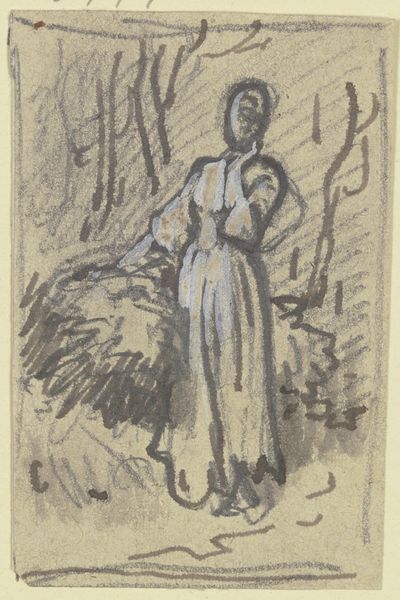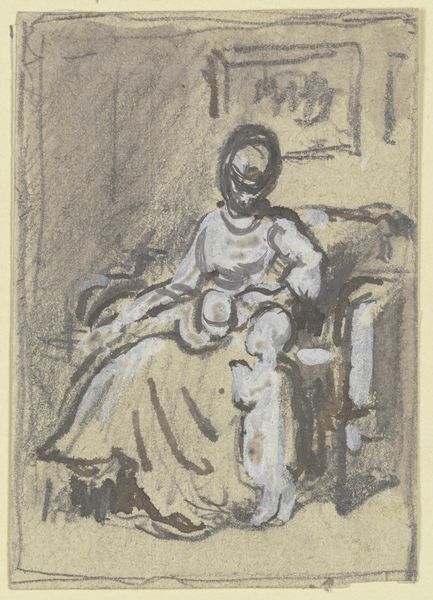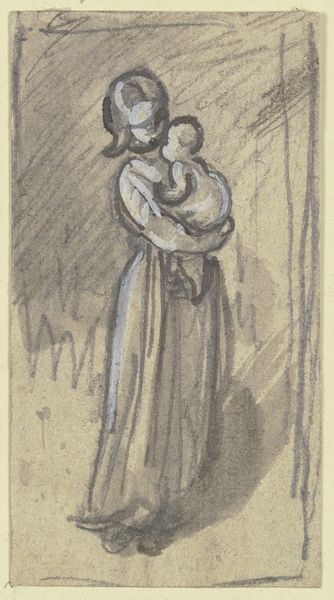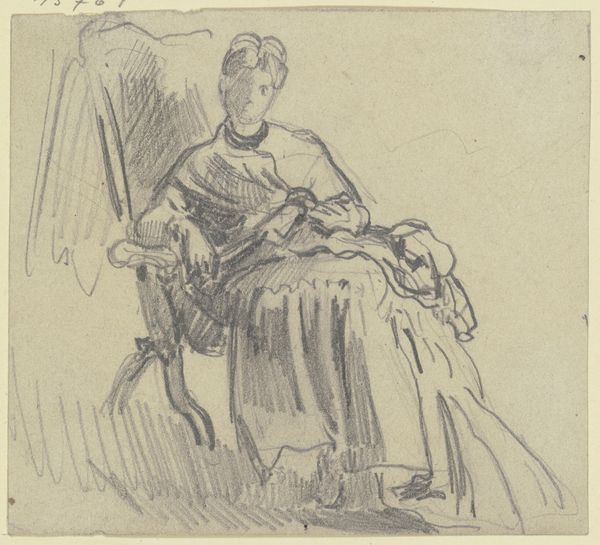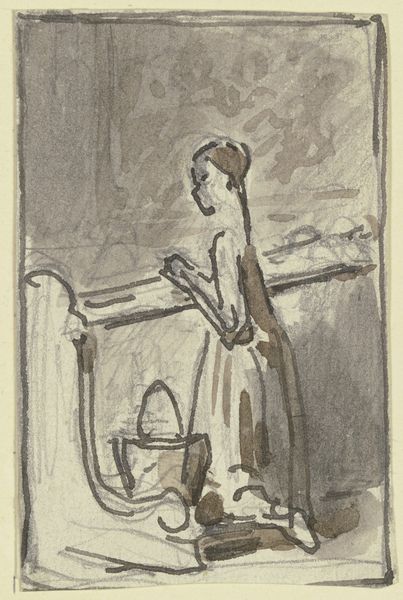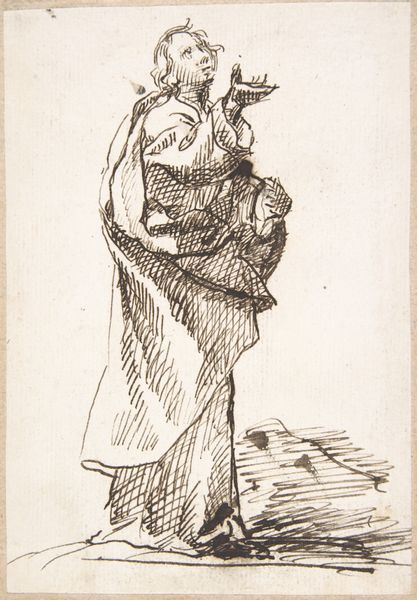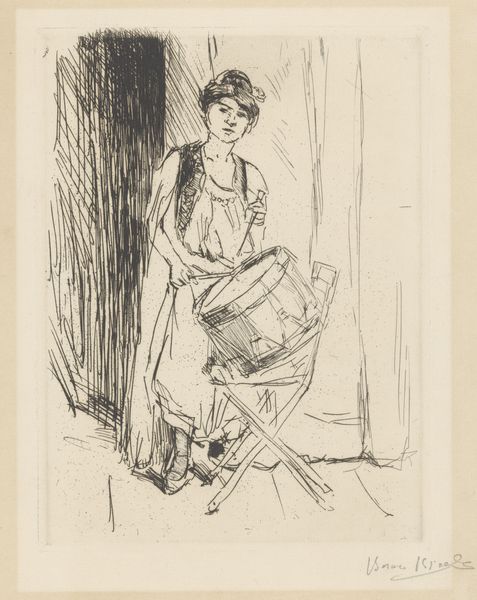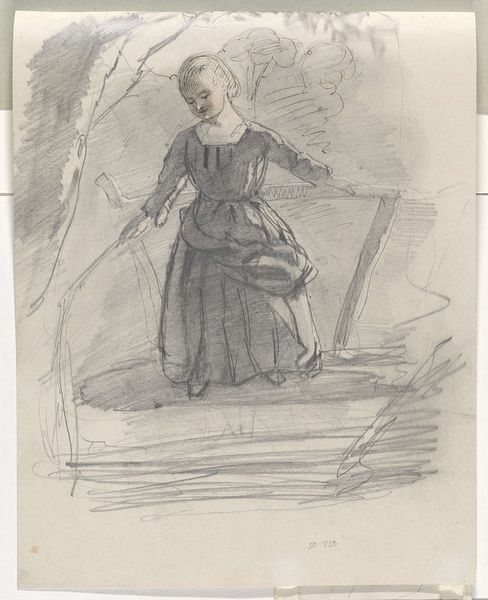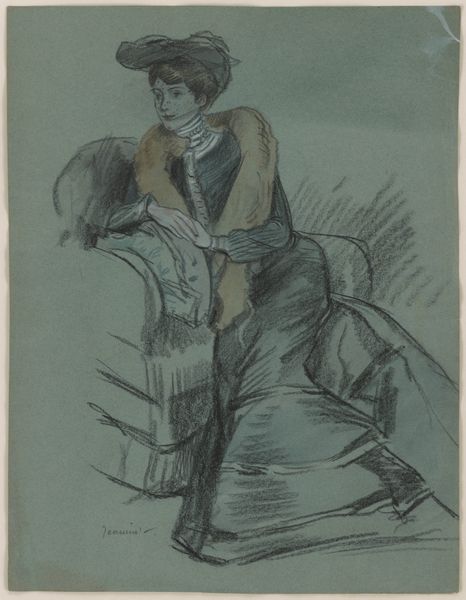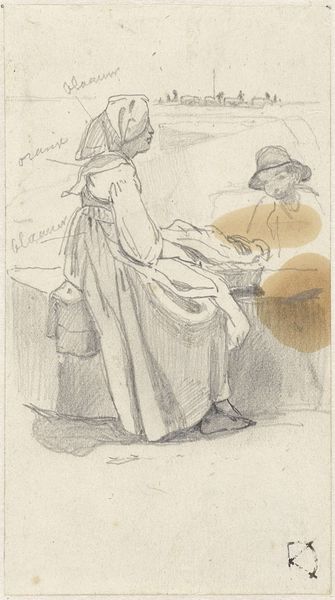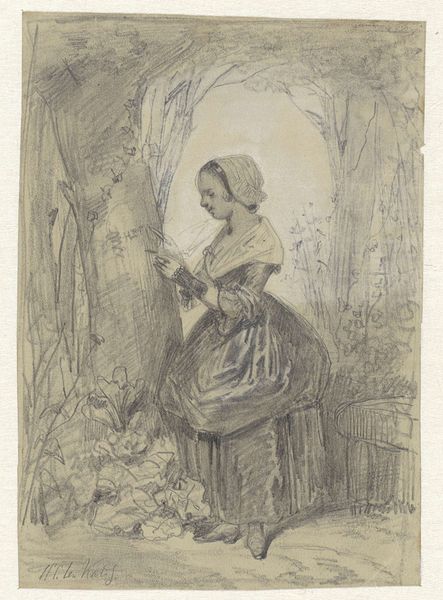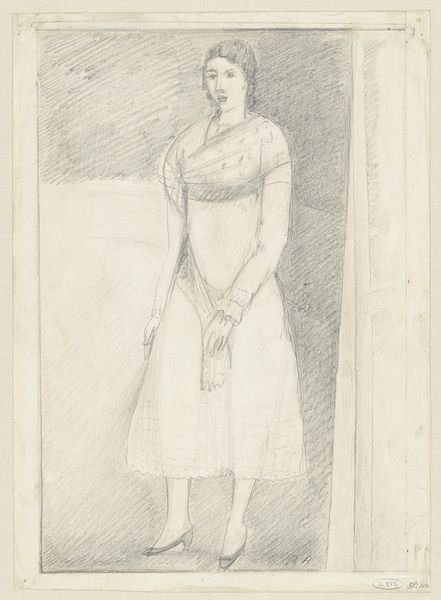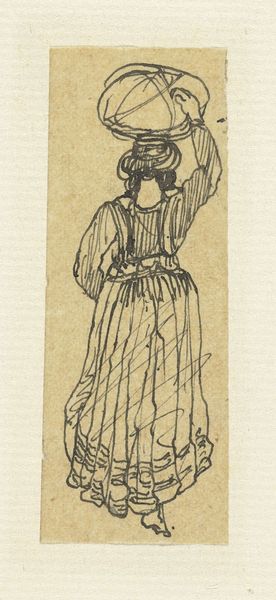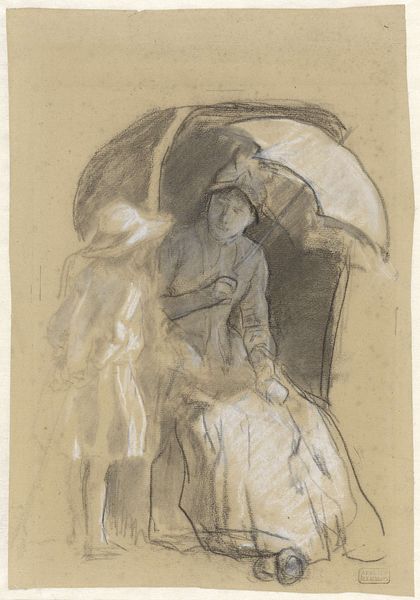
drawing, gouache, paper, ink, indian-ink
portrait
drawing
16_19th-century
gouache
pencil sketch
paper
ink
sketch
indian-ink
portrait drawing
realism
Copyright: Public Domain
Curator: Let’s turn our attention to "Frau mit Strohbündel, die Arme in die Hüfte gestemmt," or "Woman with a Bundle of Straw, Hands on Hips," currently held here at the Städel Museum. Editor: Immediately, I am struck by its air of quiet defiance. Her pose, with hands firmly on her hips, suggests a resistance to some unspoken expectation. Curator: Indeed. The artwork, attributed to Philipp Rumpf, employs ink, gouache, and possibly Indian ink on paper, offering a study in tonal contrasts. The swift strokes capture the form and the essence of the subject and her work. Editor: Absolutely. The straw itself is depicted almost abstractly. It seems to emphasize her connection to the land and the labor from which it comes. The gendered nature of agricultural work comes to the fore. We cannot overlook how representations of women in fields throughout art history has created assumptions. Curator: And this returns to the context of its creation. The image is more of a sketch and the rough strokes may imply urgency; the finalisation of such sketches resulted from particular, material artistic labors and cultural factors. Editor: How so? Is there further socio-cultural detail implied by the use of materials and rapid sketch method here? Curator: The medium allows for the creation of multiples. Editor: I see, so it's tied to distribution in a broader sociopolitical landscape. But let's consider this further. It's not a posed studio portrait; she’s situated next to her labour, it creates intimacy. The straw is her burden and she has accepted it with integrity. I'm further compelled to think of the socio-economic implications and women’s empowerment when seeing these representations. Curator: Right. In addition to gender representation and work-place politics, what also draws me in is the deliberate composition. The straw bundle's texture versus the woman's relative form creates a visual language, reflective of artistic license in an era where rural depiction was changing rapidly. The ink washes shape form effectively. Editor: Reflecting upon our discussion, it's clear that a closer reading unveils how traditional ideas have informed current material realities of labour for rural people, especially women. Curator: Yes, from material concerns of production to critical concerns about identity and place, the artist has prompted discussions about work.
Comments
No comments
Be the first to comment and join the conversation on the ultimate creative platform.
